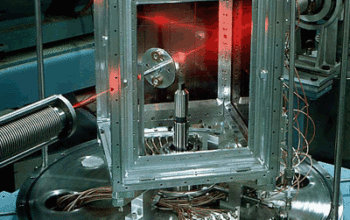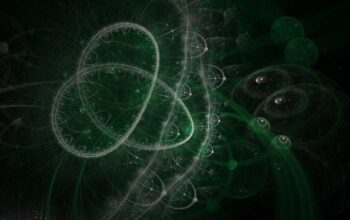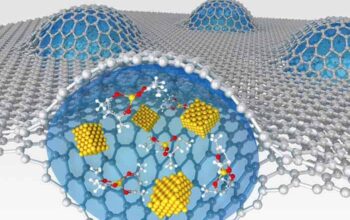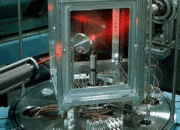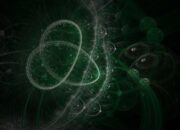The emergence of fermionic condensate into the scientific limelight signifies a remarkable advancement in the field of condensed matter physics. This exotic state of matter, characterized by the pairing of fermions at temperatures approaching absolute zero, challenges conventional notions of matter and manifests the nuanced complexities of quantum mechanics. Such phenomena not only captivate the intellectual curiosity of physicists but also plant the seeds for future technological innovations.
At temperatures near absolute zero, quantum effects become pronounced, and the behavior of matter transcends classical interpretations. In this regime, fermions—particles such as electrons, protons, and neutrons that obey the Pauli exclusion principle—exhibit intriguing interactions. When cooled sufficiently, these particles can form Cooper pairs, similar to the pairing seen in superconductivity. This condensation happens without the necessity of boson-like behavior, allowing fermions to transcend their typical exclusionary interactions and coalesce into a collective quantum state.
The formation of a fermionic condensate stands at the confluence of several compelling phenomena, most notably the Bardeen-Cooper-Schrieffer (BCS) theory of superconductivity and the complexities articulated by the Bose-Einstein condensation (BEC). While BEC involves the clustering of bosons into a singular ground state, fermionic condensates elaborate on this conception by showcasing pairs of fermions, effectively borrowing properties from both classes of particles. This duality is not only intellectually stimulating but serves as a crucial reminder of the intricacies of particle interactions under varying conditions.
Scientific intrigue surrounding fermionic condensates lies not merely in their exotic properties, but also in their implications for our understanding of quantum field theory and the standard model of particle physics. As physicists delve into these condensed states, they navigate the labyrinthine interface where particle physics converges with condensed matter phenomena. This space provides fertile ground for experiments that could elucidate fundamental questions regarding the nature of symmetry breaking in quantum systems, the emergence of mass, and the behavior of matter in extreme conditions.
Notably, the production of fermionic condensates requires sophisticated experimental techniques, often involving the cooling of atomic gases to nanokelvin temperatures using laser cooling and evaporative cooling methods. As such, the transition to a condensed state is delicate and necessitates meticulous precision. The achievement of this state in the laboratory epitomizes scientific progress and underscores humanity’s growing capability to manipulate the quantum realm.
Moreover, the study of fermionic condensates extends its tendrils into various domains of inquiry. The potential applications of this research are manifold, ranging from advancements in quantum computation to significant enhancements in sensor technology. Quantum computers, which rely on the principles of superposition and entanglement, may benefit from the novel quantum states represented by fermionic condensates, paving the way for information processing capabilities that transcend classical limitations.
One of the more thought-provoking aspects of fermionic condensates is their potential relationship with theories of quantum gravity and the early universe. Speculation surrounding the behavior of fermionic condensates within extreme cosmic conditions invites questions about the evolution of matter in the nascent stages of the universe. Understanding these systems could offer insight into early symmetries and phase transitions which shaped the cosmos. This exploration touches on fundamental inquiries about dark matter, black hole physics, and the underlying architecture of spacetime itself.
Furthermore, the observation of phenomena such as superfluidity and quantum vortices within fermionic condensates enhances their allure. These behaviors exemplify quantum mechanics’ capacity to manifest in macroscopic systems, bridging the gap between quantum phenomena and tangible perceptible effects. The fascination with these unique behaviors is compounded by their inherent counterintuitiveness—where individuals are left grappling with the apparent breakdown of classical physics and the emergence of wholly novel states of matter.
While the scientific community celebrates the debut of fermionic condensate, this recognition also brings to the forefront broader discussions about the interpretation of quantum mechanics, thermodynamics, and the philosophical implications of such findings. As researchers venture deeper into the mysteries of quantum states, they inadvertently confront longstanding debates regarding determinism, locality, and the nature of reality itself. The study of such exotic states urges a reevaluation of our conceptual frameworks and presents fresh avenues for philosophical discourse, thus bridging the realms of science and philosophy.
In conclusion, the debut of fermionic condensate on the quantum stage is not merely an academic milestone; it represents a profound leap in our understanding of the universe. The fascination evoked by these materials ought to be attributed not just to their exotic properties but also to what they unveil about the underlying structures of matter and spacetime. As the scientific community continues to explore these intricate systems, it is anticipated that fermionic condensates will reveal deeper insights into both the microcosm of particle physics and the macrocosm of cosmic phenomena. Their burgeoning relevance in advancing quantum technology serves as a compelling reminder that, in the world of fundamental physics, each discovery lays the groundwork for the next. The quintessence of such research is, and will remain, a testament to human ingenuity and the perpetual quest for knowledge.

